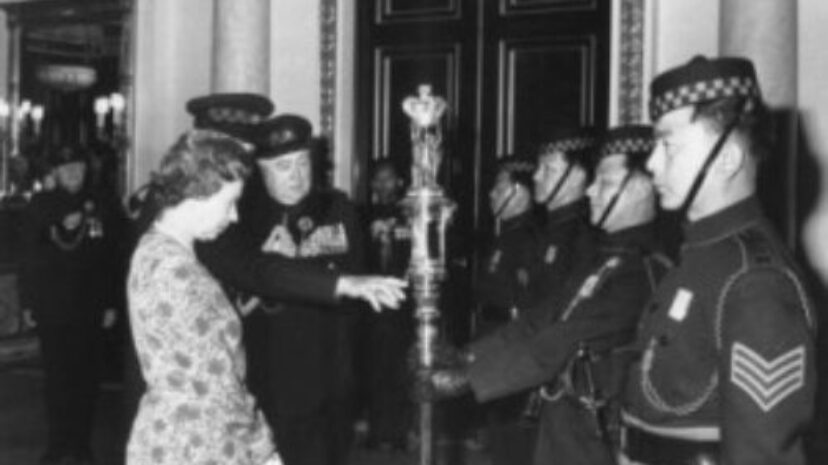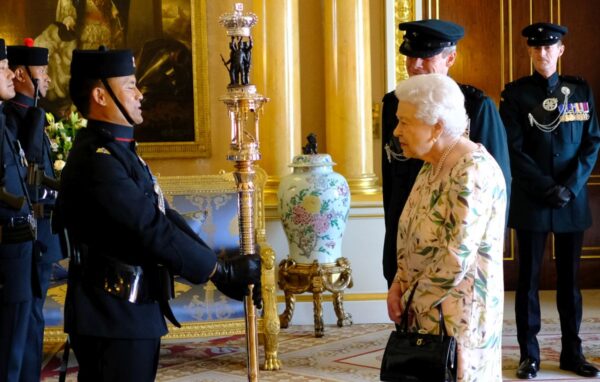History of the Queen’s Truncheon
The history of the Truncheon dates back to the time of the Indian Mutiny when The Sirmoor Battalion (later the 2nd KEO Gurkha Rifles) particularly distinguished itself by holding the Ridge during the siege of Delhi. Here they fought alongside the 60th Rifles. During the prolonged action, all its officers and 327 of its 490 other ranks became casualties.
For the Battalion’s outstanding service during the Mutiny, Queen Victoria was pleased to grant it a third colour inscribed ‘Delhi’ in English, Hindi and Persian. (The Sirmoor Battalion already held a Queen’s Colour and a black Regimental Colour.) At the same time, additional distinctions were awarded to the Battalion. Henceforth, the rank and file were to be known as Riflemen, the title was changed to the Sirmoor Rifle Regiment and the Battalion was authorised to wear the uniform of the 60th Rifles (now The Rifles). The affiliation with The Rifles remains to this day.
It was not considered appropriate for Rifle Regiments to carry colours and uniquely Her Majesty Queen Victoria presented the regiment with the Truncheon to be carried in lieu of this third colour. The Queen’s Truncheon is ‘accorded all the dignities and compliments appropriate to a King’s Colour of Infantry’. Since the Queen’s Truncheon was passed to the Royal Gurkha Rifles it has continued to be held in the greatest reverence. Accordingly, all New Recruits continue to be sworn in to the Regiment in the presence of the Queen’s Truncheon.


Most men and boys in the hills of Nepal possess a kukri and in the Service, every Gurkha soldier is provided with one from which he is never separated. The wrist action with which the kukri is wielded makes it extremely effective in the hands of one accustomed to using it.
For ceremonial and presentation purposes, kukris with scabbards ornamented in gold and silver and handles of ivory are often seen, and there is also a form of sacrificial kukri with a
longer blade and handle suitable for gripping with two hands. The latter is little used except for sacrificing animals at festival time.
The popular myth that blood must be shed every time a kukri is drawn from its scabbard is untrue and probably stems from the fact that if drawn in anger, then it is unlikely to be replaced without being used! Similarly, stories of the kukri being used as a throwing knife can be disbelieved.


Find out more about our history with the Gurkha Museum


